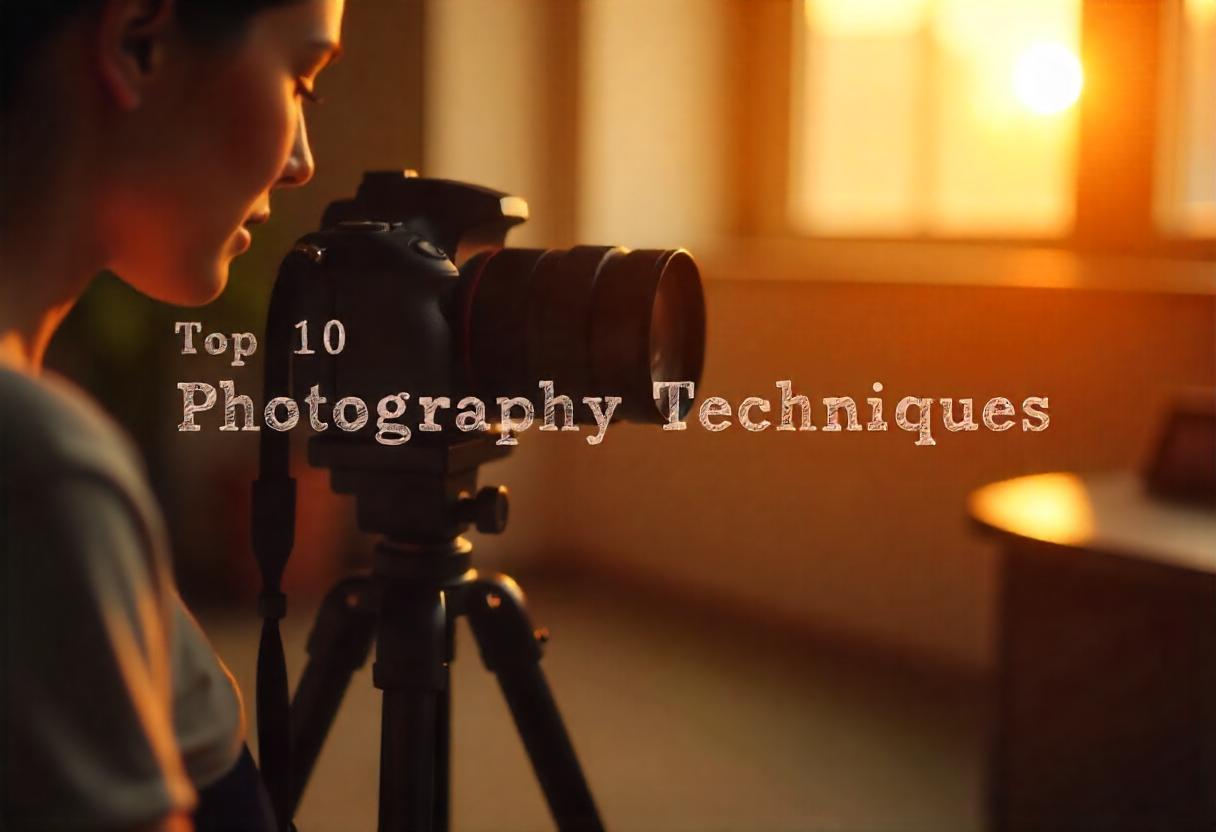How to Build a Successful Career in Photography: A Complete Guide
Are you an aspiring photographer? Are you interested in knowing what a successful career in photography requires? Is there any guide to help an individual ponder the necessary aspects of photography as a profession? If the answer to all these questions is a ‘big’ yes, then just continue reading.
Photography is a passion for many people. However, not all photographers possess the knowledge to make it their profession. Most people do not have the right concept of what a photography career is all about. All they know is to pick up a camera and shoot. They don’t give any thought to what it requires to map a photography career correctly. Sometimes, people start their careers in the media and journalism industry and then move to photography.
In other cases, when they are not content with their mundane jobs, they move into this profession seeking contentment, both emotionally and monetarily. No individual, and we mean no person, really looks at photography as a great money-making scheme. Now that’s a huge mistake. People view photography as an easy, glamorous occupation. Many people earn good money. It is a very profitable job that can be satisfying as well as exciting. Individuals who transitioned into photography from other trades now include Pulitzer Prize-winning or National Geographic photographers. They have modern technology and make a nice living doing something they love. So now, right at the outset, we will give you some eye-openers.
Photography, a career nurtured with skills, creativity, and business-mindedness, however, requires almost real technical knowledge to outsmart them all. The advanced phase is in digital media, where there is an increasing demand for visual content in almost all industries. This is the way opened for budding photographers to exploit numerous opportunities at this age. This blog post is a complete guide discussing the processes and methods of making a successful photography career with real-world examples and insights.
Understanding Different Career in Photography
Do you want free career counseling?
Ignite Your Ambitions- Seize the Opportunity for a Free Career Counseling Session.
- 30+ Years in Education
- 250+ Faculties
- 30K+ Alumni Network
- 10th in World Ranking
- 1000+ Celebrity
- 120+ Countries Students Enrolled
Photography is a huge area that is further divided into several specializations, all having unique requirements and offers. Here are some great careers in photography:
- Portrait Photography: Photography is the act of taking pictures, especially for individuals or groups. It could also mean snapping portraits in a studio or at a public event. Portrait photographers have to possess superb interpersonal skills because they must make subjects feel relaxed and capture their personality.
- Commercial Photography: Commercial photographers, who work with products, fashion, food, and other items, take photographs for marketing purposes. They should know about branding and clients’ requirements to produce photos that can sell.
- Event Photography: These photographs are collections of memorable events. This includes wedding and corporate events and parties, all those great moment gatherings usually held at a specific place and time in memory of capturing that splendid moment in life. Usually, the position requires fast thinking and the ability to adjust to new conditions.
- Travel Photography: It combines traveling with photography; it is all about culture, sceneries, and experiences around the world. A travel photographer works mostly freelance or with magazine houses.
- Photojournalism: Photojournalists, translate tales through images, particularly on matters that deal with current and world events. This profession needs an understanding of storytelling with the ability to perform effectively even when under stress.
Education and Training Opportunities
Read Also: How to Become a Professional Photographer: A Step-by-step Guide
Eligibility Criteria
The eligibility criterion for most photography courses is that a candidate has completed Class 12 from a recognized board. The eligibility requirement differs from institution to institution and even from UG course to PG course. For example, some courses require an undergraduate degree in a related field before pursuing a Master’s.
Book Now →
Postgraduate Programs
- Master’s Degree: Degree programs in photography at advanced levels include an MA in Commercial Photography, which sharpens the technical skills and artistic vision.
Undergraduate Programs
- BFA (Bachelor of Fine Arts)– There are various institutes that offer a BFA program with specialization in photography for a period of 3-4 years.
- Diploma and Certificate Programs This program is best for those seeking quick training in their interest area of photography. These can go from a very foundational 7-3 months covering all essential skills and techniques in photography.
Course Fees
Tuition fees for photography courses vary widely according to the types of programs and colleges. Here are the major categories:
- For undergraduate programs, the fee normally ranges between ₹1,00,000 and ₹6,00,000 for the entire course.
- The diploma courses cost between ₹50,000 to ₹2,00,000.
- Qualified by the duration and subjects of study, short-term certificate courses might range from about ₹10,000 to ₹1,00,000.
Possibilities after photography Courses:
After completing a photography course, there are lots of career opportunities like:
- Portrait Photographer
- Commercial Photographer
- Photojournalist
- Wildlife Photographer
- Event Photographer
Most institutions emphasize this part where students are either put into internships or into projects through which they are supposed to build a professional portfolio.
Do you want free career counseling?
Ignite Your Ambitions- Seize the Opportunity for a Free Career Counseling Session.Skills Development
Indeed, photography requires both technical and soft skills:
- Technical Proficiency-the grandeur of knowing your camera equipment as well as editing programs (Adobe Photoshop, Lightroom, etc.) to deepen lighting, composition, and color theory.
- Creativity would just involve creating an individual style that just might distinguish you from everyone else. Trying different techniques and genres is just like finding yourself in your niche.
- Interpersonal skills and a good relationship with clients a key components, especially when it comes to portrait and event photography because even the smallest details in communication can make or break a service.
Building a Portfolio
Read Also: The Best Professionally Approved Photography Courses in India
It contains the finest pieces that show your real talent and tell about your sense of style to prospective clients. Here are some tips on how to compose an effective Photography portfolio:
- Diversity: Include multiple images that will show the client that you can do much besides just your photography genre.
- More quality than quantity: Pick out only your best works; it’s better to have a few of them but of high quality than to have many mediocre photos.
- Online Presence: Make sure they either visit your professional website or see your portfolio displayed on platforms like Instagram. No navigation should be challenging, nor is it going to be pleasing to the eyes.
Networking and Marketing
Networking is an important part of acquiring a client and non-client industry contact:
- Social Media: Use sites like Instagram, Facebook, or LinkedIn to connect other photographers to potential clients or brands.
- Local Events: Go to photography fairs, get exposure in workshops, or meet other local community activities to find other fellow photographers, your work, and stuff like that.
- Collaborations: Get into some gig partnerships with local businesses or influencers where you can cross-promote. For example, team up with a wedding planner so the two could offer their services to brides-to-be wanting everything to be combined.
- Keep Learning: Because the photography industry is dynamic, keeping abreast of the current trends is vital:
- Workshops and Courses: Attend workshops and courses online periodically to sharpen your photography skills. For example, they specialize in a whole bunch of different photography techniques at CreativeLive.
- Feedback: Ask for constructive criticism from your peers or mentors so that you always improve your craft.
Financial Management:
A keen knowledge of the business part of photography is very crucial.
- Pricing your Work: You have to check into the different rates of photography services that are common in your area.
- Budgeting: This keeps track of the expenses that go with the costs for equipment, advertising, and travel expenses, and even uses an accounting software that is tailor-made for a freelancer.
- Contract: Make every engagement with each client on a contractual basis stating all the terms concerning payment and deliverables as well as those regarding usage.
Marketing Your Work
Marketing and ways to promote work in photography in India have been both traditional and modern – old ways and new ways of marketing and promoting your work enable you to reach potential clients.
Read Also: Complete Guide to Travel Photography Gear and Tools
Here are some of the most practical and effective strategies for Indian conditions.
1. Establish Online Presence
- Create a Professional Website: A well-designed website is like your portfolio and business card. It must showcase your best work, tell what services you offer, and contact information. Mobile-friendly and SEO-optimized websites should play an important part in driving organic traffic.
- Use Social Media: Photograph the best categories of images of yourself every day on Instagram, Facebook, and Pinterest. Post these into your feed, engage with followers occasionally, and always include relevant hashtags for them. For example, use #IndianPhotography or #WeddingPhotographyIndia.
2. Use Google My Business
Google My Business (GMB) is a really good tool for increasing local visibility. Create an account with the name of your business, street address, contact number, and an informative summary of your business. You should also have happy clients leave reviews for your GMB account—it can improve your credibility and bring in a few more local customers.
3. Network With Other Professionals
Networking with other businesses and professionals’s work or industry relates can sometimes lead to a referral or recommendation. For example: Wedding Photographers need to network with wedding planners, caterers, or florists. Commercial Photographers can network with marketing agencies and/or real estate agents. And don’t forget to attend industry events, workshops, and seminars to expand your network.
4. Present Local Events and Fairs
Performing at a local exhibition or photography fair allows you to expose your art to a possible customer directly. Bring your portfolio or sample albums to showcase your style and quality of work. Hold mini photo sessions in these events so that you can entice them.
5. Offer Workshops or Classes
Photography workshops enable you to brand yourself as expert plus it allows you to cater to those interested in photography to convert them into potential clients. You can perform your skills in front of the eyes of everyone and gain that trust without finding it to be awkward.
Read Also: The Future of Photography: Trends and Techniques in Photography Education for 2024
6. Organize contests and promotions.
Organizing photography competitions will create noise around your brand. Ask participants to submit the photos they clicked that were related to any themes of your work. Offer tempting prizes like free photo sessions or prints so that their numbers increase and you will be visible online.
7. Client Testimonial Collection
Positive past client testimonials influence future customer decisions. Bring these testimonials to the front of your web and social media presence. Video testimonials are also trending these days.
8. E-Mail Marketing
Make an email list via a newsletter or free stuff (that is, a photography guide). Start sending news on your work, special offers, or events about your services. This will make sure your audience is updated with all that they have to know and are engaged.
9. Collaborate with Influencers
Partnering with social media influencers can create noise about your work being heard more deeply across a broad range of people. For example, pick an influencer whose style is similar to yours. They can then market your photography services using their perspective, which will lead you to people interested in coming your way.
10. Paid Advertising
Put money into Targeted Online Advertising through like Facebook Ads and Google Ads. Make your campaign goals clear so as to measure them effectively.
Read Also: Photography Courses After 12th: Course Details, Fees and Career Opportunities
Marketing photography work in India is creative, strategic, and consistent in any one or more of its channels. Traditional and digital networking, community event participation, and appropriate promotional activities are effective ways of increasing visibility and, thus, generating a steady stream of clients in this competitive industry.
Conclusion
Education undoubtedly opens doors for aspiring photographers, providing them with the knowledge and skills to excel in this creative field. Various options, such as degree courses, short-term courses, and diploma courses, equip students with the expertise needed for a successful career in photography. Among these, the AAFT School of Photography stands out as a premier institution offering comprehensive Photography Courses and Diploma in Photography, designed to hone both technical and artistic skills.
Investing in quality education plays a significant role in navigating the competition in this rapidly growing arena, as the need for visual content becomes indispensable across industries. Combining passion with strategic planning is key to success. Understanding diverse career in Photography paths, building a strong skill set, curating an impressive portfolio, networking, adopting lifelong learning habits, and managing finances effectively can help carve a niche in this dynamic field.
Whether capturing family portraits or the breathtaking beauty of a landscape, photography offers endless possibilities. Embrace this art with creativity, determination, and the right educational foundation to turn your passion into a thriving career.

AAFT has been providing the world with limitless creativity and expression since 1993! Through a dynamic and industry-driven curriculum, AAFT provides engaging and captivating articles to persuasive blogs and empowers its readers to explore diverse avenues of creative media education-related content.











